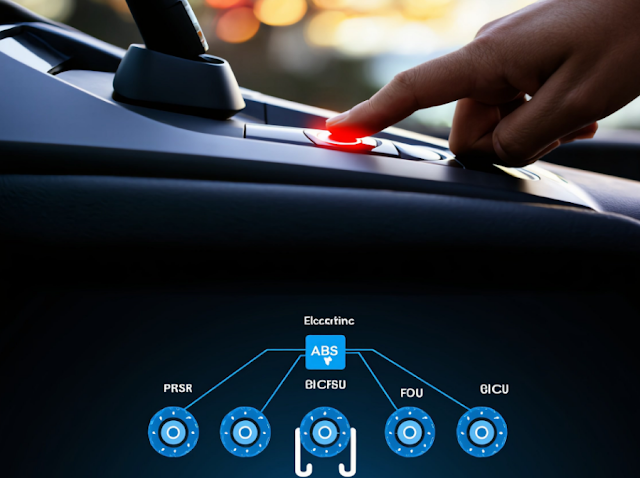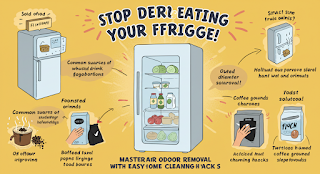I remember the exact moment the first COVID-19 stimulus check hit my bank account. It was a strange mix of relief and anxiety. That little notification on my phone felt like a lifeline in a sea of uncertainty. The world had seemingly shut down overnight, my work hours were slashed, and like millions of other Americans, I was glued to the news, wondering how we’d all get through this. That direct deposit wasn’t just money; it was a signal from the government that, hey, we see you, and we’re trying to help. It’s fascinating to hear about hot topics like the “consumption recovery coupons” in South Korea, and it got me thinking about how differently our countries approach putting money back into people’s pockets. It’s not just about economics; it’s about culture, philosophy, and what we believe the role of government should be. So, let’s take a deep dive together into the wild world of American public support policies. It’s a journey with some highs, some lows, and a whole lot of debate. 😊
The Big One: Economic Impact Payments (a.k.a. Stimulus Checks) 💸
Let’s start with the most famous, and probably most direct, comparison to a consumption coupon: the Economic Impact Payments, which everyone in the U.S. just called “stimulus checks.” It was a pretty wild time. The government needed to act fast to prevent a total economic collapse as businesses closed and people were told to stay home.
Unlike a targeted coupon, this was, for the most part, a broad, no-strings-attached cash infusion. If you were under a certain income threshold, you got money. Simple as that. It felt less like a nudge to spend on specific things and more like a desperate “Here, please just keep your head above water” payment.
How It All Went Down: The Three Rounds
It wasn’t just a one-and-done deal. We actually went through three rounds of these payments, each a little different as the government tried to figure out what was working.
- The CARES Act (April 2020): This was the first and, for many, the most dramatic. We’re talking up to $1,200 per adult and $500 per qualifying child. I remember the online forums and social media feeds buzzing. “Did you get yours yet?” became a common refrain. For some, it was a chance to catch up on rent. For others, it meant finally fixing the car they needed for work. And yes, a lot of it went straight back into the economy for groceries, utilities, and online shopping.
- The Consolidated Appropriations Act (December 2020/January 2021): Things were still tough, so a second, smaller round came through. This time it was up to $600 per person, including children. It felt less like a rescue and more like a small patch on a leaky tire, but hey, nobody was complaining about extra cash during the holidays.
- The American Rescue Plan (March 2021): This was the big finale. Up to $1,400 per person, and this time they included all dependents, not just children under 17. College students and elderly dependents who were left out before were now included, which was a huge deal for many families. This final round really helped bridge the gap as vaccines became widely available and the economy started to creak back to life.
The beauty of the stimulus checks was their simplicity and speed. Because the IRS already had most people’s tax information, the money could be directly deposited. There was no application for most of us, no hoops to jump through. It was direct, fast, and treated people like adults who knew best how to manage their own financial emergencies.
The Great Debate: Free Money vs. Economic Lifeline
Of course, nothing like this happens in America without a massive debate. You had one side arguing this was a vital lifeline. People used the money for essentials: 89% of adults said they used the first stimulus check on food, housing, and other bills. It kept families from being evicted and helped small businesses stay afloat, even if indirectly. Studies showed these payments dramatically cut poverty and hardship, at least temporarily.
On the other side, critics worried about the national debt and inflation. The argument was that pumping trillions of dollars into the economy would inevitably lead to prices going up. There were also heated discussions about who “deserved” the money. Should people who didn’t lose their jobs get it? Was it fair? This is a classic American argument, rooted in a deep cultural belief in individualism and a suspicion of government “handouts.”
A Quiet Revolution: The Expanded Child Tax Credit 👨👩👧👦
While the stimulus checks got all the headlines, a more profound, though temporary, change happened with the Child Tax Credit (CTC) in 2021. This was a game-changer for families, and honestly, something many of us had never seen before.
For years, the CTC was a pretty standard tax deduction—you got a credit when you filed your taxes. But the American Rescue Plan did something revolutionary: it increased the amount significantly and, more importantly, turned it into a monthly direct payment. Suddenly, from July to December 2021, eligible parents were getting $250 or $300 per child, per month, automatically deposited into their accounts.
This was huge. For a family with two young kids, that was an extra $600 a month. It wasn’t a one-time emergency payment; it was a predictable, steady stream of income. It fundamentally changed the monthly budget for millions.
Example: The Miller Family’s Budget 📝
Let’s imagine a friend of mine, let’s call her Sarah. She and her husband have a 4-year-old and a 7-year-old. Before 2021, their budget was incredibly tight. They were always one unexpected bill away from trouble.
- Pre-Expanded CTC: They might get a couple thousand dollars back on their tax return once a year. It was helpful, but didn’t solve month-to-month cash flow issues.
- During Expanded CTC: They started getting $550 per month ($300 for the 4-year-old, $250 for the 7-year-old). This predictable income allowed them to consistently afford fresh groceries, sign their older kid up for an after-school program, and even start a small savings account. It reduced their financial stress immensely.
The impact was stunning. Researchers at Columbia University found that the very first payment in July 2021 kept 3 million children out of poverty. Child poverty in the U.S. dropped by nearly half to a record low. It was an incredible, real-time demonstration of how direct cash assistance could transform child welfare.
But, like many of these programs, it was temporary. The political will to make it permanent just wasn’t there. When the monthly payments stopped at the end of 2021, child poverty rates shot right back up. It was a tough lesson in the fleeting nature of American social policy.
The Safety Net: Unemployment, Food, and Housing Support 🏠
Beyond the big stimulus packages, the U.S. has a patchwork of existing social safety nets that were pushed to their limits—and temporarily expanded—during the pandemic. These are the programs that are always there, but often difficult to navigate.
Navigating the Maze of Unemployment Insurance
Unemployment Insurance (UI) is a federal-state partnership. When you lose your job through no fault of your own, you can apply for weekly payments to help you stay afloat while you look for new work. During the pandemic, this system went into overdrive.
The federal government did two major things:
- It added a federal supplement: At one point, they added an extra $600 per week on top of the regular state benefit. This was controversial, as for some low-wage workers, it meant they were earning more on unemployment than they did at their job.
- It expanded eligibility: For the first time, “gig workers,” freelancers, and self-employed people—who normally don’t qualify for UI—were able to get benefits through a program called Pandemic Unemployment Assistance (PUA).
My cousin, a freelance graphic designer, was saved by this. His contracts dried up overnight. The PUA program was a bureaucratic nightmare to apply for—websites crashing, endless phone calls—but once he got it, it was the only thing keeping him from having to move back in with his parents. His story was incredibly common.
The experience of applying for these benefits was genuinely tough. State unemployment offices were overwhelmed. People spent hours, even days, trying to get through on the phone or navigate clunky, outdated websites. This highlights a core challenge in the U.S. system: even when help is available, accessing it can be a significant barrier.
Essential Support: SNAP and WIC
Food assistance is another critical piece of the puzzle. The main program is the Supplemental Nutrition Assistance Program (SNAP), which most people know as “food stamps.” It’s not cash; it’s a debit-like card (called an EBT card) that you can only use to buy groceries.
During the crisis, benefits were increased, and eligibility rules were relaxed, making it easier for struggling families to get help. There’s also WIC (Women, Infants, and Children), a program that provides specific healthy foods for pregnant women and young kids. These programs were pillars for families, ensuring that the economic crisis didn’t become a hunger crisis.
📋 Quick Summary of U.S. Support
Direct cash payments to individuals below an income threshold. Fast and broad, but temporary.
Became a monthly payment for families, dramatically cutting child poverty for a short time.
Weekly payments for the jobless, temporarily enhanced with federal funds and expanded eligibility.
Long-standing programs providing funds specifically for food, helping to ensure basic nutrition.
Comparing Approaches: U.S. Direct Aid vs. S. Korea’s Consumption Coupons 🇰🇷 vs 🇺🇸
This is where it gets really interesting. Hearing about South Korea’s plan to give out “consumption recovery coupons” highlights a fundamental difference in philosophy.
The Korean model, as I understand it, is very specific. The coupons or vouchers are often time-limited and can only be used at certain types of businesses, like small, local shops. The goal isn’t just to help the individual; it’s a very direct and intentional effort to stimulate specific sectors of the local economy. It’s a surgically precise tool.
The American approach, especially with the stimulus checks and the CTC, was much more of a blunt instrument. The core idea was income support. The government’s primary goal was to replace lost wages and give people the means to pay for their basic needs as they saw fit. The economic stimulation was seen as a secondary, though welcome, side effect.
In the U.S., placing restrictions on how people could spend direct aid would likely be met with significant political resistance. There’s a strong cultural narrative around individual freedom and a distrust of the government “telling people what to do” with their money. Even SNAP benefits, which are restricted to food, are perpetually controversial for this reason.
The Korean approach seems to reflect a different social contract, perhaps one with more trust in the government’s ability to guide economic recovery and a collective willingness to participate in that targeted effort. It’s a fascinating contrast: one is about empowering the household, the other is about empowering the local economy directly.
Frequently Asked Questions ❓
Looking back, the American response was a fascinating, messy, and quintessentially American experiment. It was a mix of massive, fast-acting programs and a reliance on a creaky, patchwork safety net. It showed a capacity for bold action but also revealed the deep political and cultural divisions that make long-term social support so challenging here. It’s really cool to learn from other countries’ approaches, like the coupons in South Korea, because it forces us to think about our own systems in a new light. What are your thoughts? Share them below! 😊





